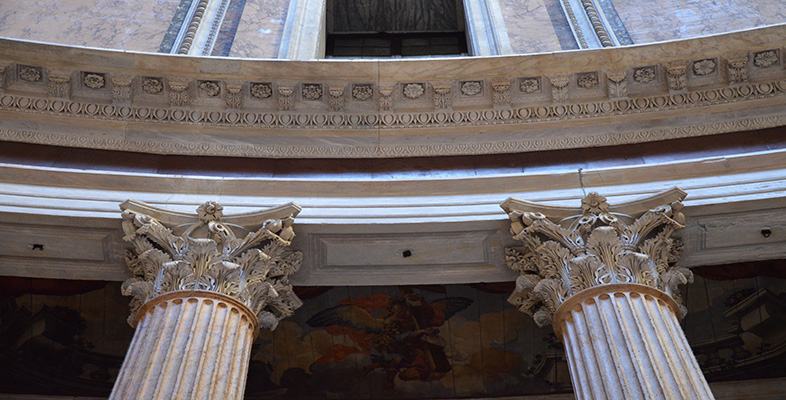Glossary
- brick stamps
- Bricks stamped with the name of the contractor or subcontractor and, from the second century CE, dated by adding the name of the consul for the year. Consequently very useful for dating buildings in Rome.
- cella
- The interior part of a temple which housed the cult statue of the deity or deities.
- Corinthian column
- Favoured column type for major temples and the most common column type in Rome. Identified by its acanthus leaf capital and rectangular plinth with circular base on top of it.
- entablature
- A lintel (architrave) on top of the columns of a building, with a frieze above it and a projecting cornice on the top.
- gens
- Family or clan whose members shared a common name and who were purportedly descended from a common ancestor.
- gentes
- Plural of gens.
- oculus
- A central opening in the crown of a dome.
- pantheon
- A term deriving from ancient Greek and meaning ‘all the gods’.
- pediment
- A low-pitched triangular gable which forms the end of a roof’s slope above the front of a porch. Often found as part of a temple’s architecture.
- peperino tufa
- A very hard volcanic stone, dark blue-grey in colour, with specks of black and white, and found near Rome. Suitable for carving and resistant to fire.
- podium
- A raised pedestal or base, often found supporting the superstructure of a temple.
- Proconnesian
- A large-grained white marble or fine-grained white marble veined with black, quarried from the island of Marmara (Proconnesos) in north-west Turkey, and used in Rome from the second century CE.
